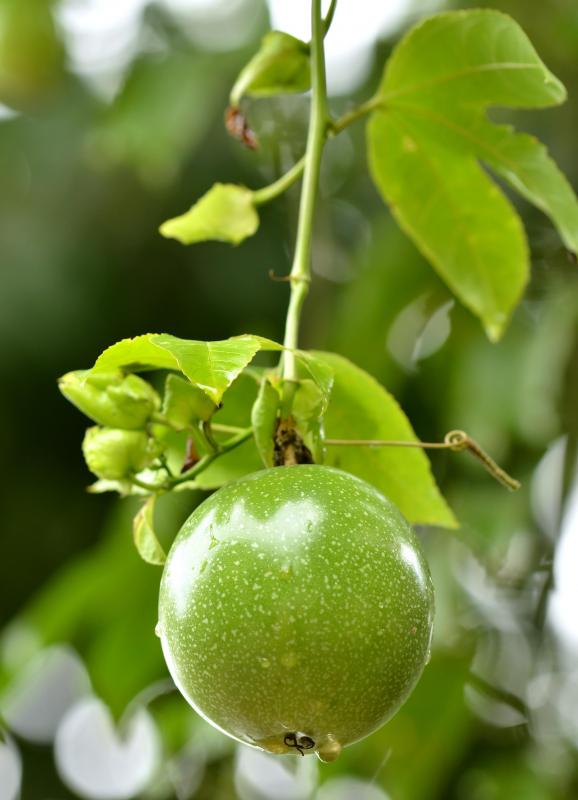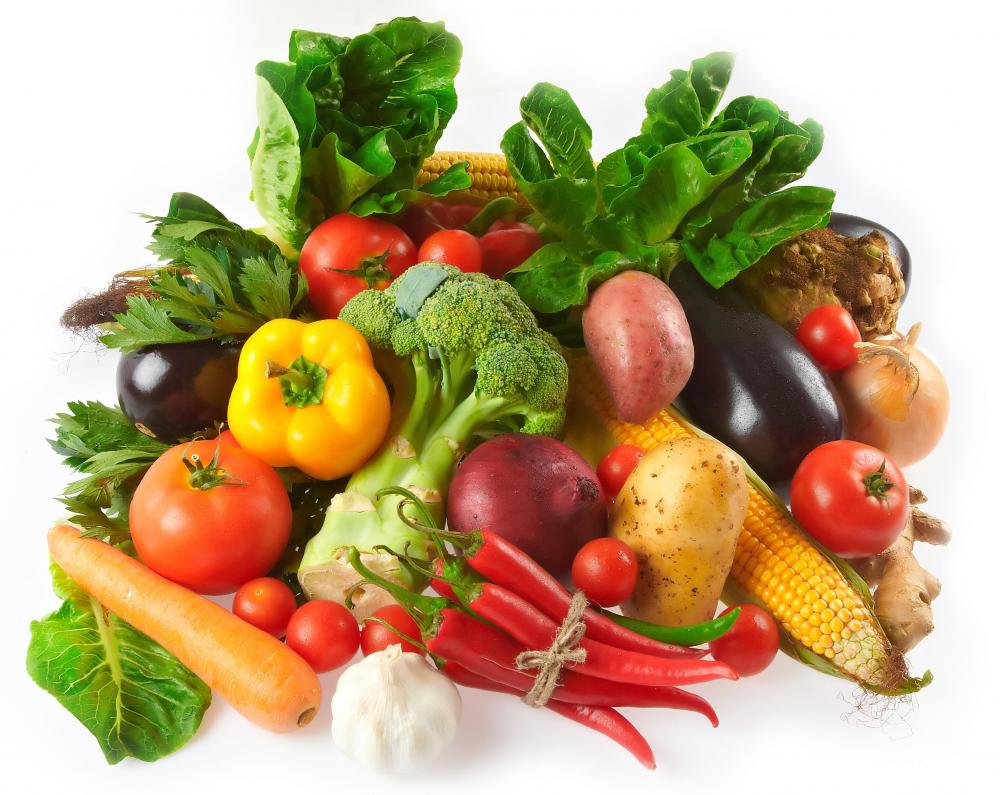How are Seedless Fruits and Vegetables Grown?
 Mary McMahon
Mary McMahon
There are a number of ways to propagate seedless fruits and vegetables, ranging from grafting to crossing specific seeded varieties to produce sterile offspring. Technically, the idea of a “seedless fruit” is a bit oxymoronic, as a fruit is, by definition, a fully matured ovary that contains seeds used for propagation. Given that such fruits and vegetables taste and feel like their seeded counterparts, however, use of the term is generally viewed as acceptable for the sake of convenience.
One method for propagating fruits and vegetables comes from the plants themselves. Many plants put out what are known as runners or offsets, which emerge from fully mature plants, and they are designed to spread the plant across a wider area. When a plant produces particularly tasty fruits and vegetables, these offsets can be encouraged to create a plantation, which is actually just a series of clones from a single plant.

Grafting can also be used to cultivate crops. This technique is most notably used with fruit trees, in which a branch from one tree is cut and attached to another fruit tree. If done at the right time of year when sap is running high, the graft will easily take, growing onto the parent tree and using that tree as a source of nutrition. With grafting, it is possible to grow a tree that produces a multitude of fruit varieties, including seedless fruits; grafting is also used to attach more fragile fruit trees to sturdy rootstock in cool climates.

It is also possible to grow seedless fruits through the use of cuttings, which produce clones of the parent tree. Cuttings are produced by snipping off sections of the plant and encouraging them to grow independently. Ultimately, the grafts will put out roots, allowing gardeners to plant them.
All of the above techniques for propagation have one serious flaw: they lead to a decline in biodiversity. Because they involve essentially making copies of one plant, if an agricultural disease that targets that plant evolves, it can spell big trouble. Many famous cultivars of seedless fruit, for example, are grown all over the world, and these stocks could be extremely vulnerable to disease or pests. The decrease in biodiversity is also bad for the species in general, as the more diverse a species is, the more likely it is to survive, as a general rule.

There is another method for breeding crops that involves crossing two varieties to produce a sterile hybrid. This technique is most famously used in watermelons. Essentially, two varieties with unequal numbers of chromosomes are crossed, creating an offspring that will produce fruit that never develop seeds. This technique tends to promote biodiversity, because each year, an entirely new crop is created, encouraging farmers to retain healthy stocks of seeded varieties to crossbreed.
AS FEATURED ON:
AS FEATURED ON:














Discussion Comments
News flash for seedless fans! Nature needs no help. Greed and "convenience" are causing degeneration among us. Just learn how to eat regular food, as has been done for thousands of years. It may take a few minutes longer.
@lighth0se33 – I'm not aware of any seedless strawberry plants. The funny thing is that strawberries produce runners on top of the ground, so I don't believe they even need to make seed in order to spread.
It's the same story with blackberry bushes. These little berries are just full of seed, but they spread by underground. I once tried to transplant a little bush, but I found that its roots were connected to the other plants, and I had to cut through the root like it was an umbilical cord.
The plant only survived for a few weeks. I watered it, gave it plenty of sun, and even fertilized it, but it was doomed.
Is there such a thing as a seedless strawberry plant? I know that strawberries are normally covered in seeds on the outside, but I'm curious about whether anyone has tried to make a version that doesn't have these seeds.
@sunshined -- I have found the same thing when it comes to grapes. My kids love grapes that are seedless, but I think the sweetest grapes are the ones with seeds in them. I don't buy them very often because I am the only one in my family who goes to the trouble of eating them.
It is a lot easier to pop a grape in your mouth and not worry about biting down on a seed. I also feel like I get a little bit more for my money with seedless grapes. If I am craving a really sweet tasting grape though, I will buy a small bunch of seeded grapes just for myself.
I like seedless watermelon, as far as not messing with all the seeds, but I have never found a variety that is quite as sweet as the watermelon that has seeds.
I am sure there are probably some really sweet varieties of seedless watermelon out there, but I have been a little disappointed in the ones I have tried.
It sure sounds like there is a lot of science behind breeding seedless fruits and vegetables. If I want to grow seedless fruit like watermelon, I just look for the seed packets that are for the seedless variety. I have never tried doing any of the propagating myself.
@purplespark: Fortunately, grapes are very adaptable and can grow in a large range of conditions and soil types. The ideal spot would be a good sunny location that gets plenty of air circulation.
It is optimal to build a sturdy trellis for the vines to grow on.
@purplespark: As the article stated, grafting is how most seedless fruits are grown. It sounds like a complicated process but it’s really fairly simple. We started growing grapes about five years ago and it has truly been delightful!
You need the pollen of a seedless grape and then flowers of a seeded grape to start off. There are several websites that show step-by-step methods of grafting much better than I can explain it but it works great.
Seedless grapes are self-pollinating and grow well in most parts of the country.
I have been wanting to grow seedless grapes but I'm not really even sure where to start. Does anyone have any tips on how to start growing them?
Post your comments